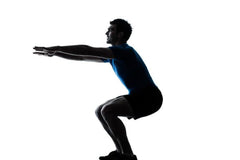Welcome to Better Workouts with Limm! Here at #TeamLimm, we offer only the best workout gears and wellness products to help you train better, heal better and live better. We hope you enjoy the content below!
Jump ropes have been around forever, and you probably took a turn or two with them when you were a kid. But little did you know back then that jumping rope is one of the most effective fat-burning, endurance-building activities you can do, incinerating a ton of calories and boosting your metabolic rate for hours afterward.
“Jump rope is considered one of the greatest exercises on the planet, improving cardiovascular fitness in a third of the time compared to most other aerobic exercises,” says Buddy Lee, U.S. Olympic wrestler and author of Jump Rope Training (Human Kinetics, 2010.) “It’s a total-body activity that incorporates all muscles of both the upper and lower body. And it’s a skilled movement that requires the synchronization and coordination of two movements — a linear motion (body) and a circular motion (jump rope) — requiring the proper timing and coordination to create the perfect jump.”
Though it may sound simple, jumping rope does take some preparation and practice, and you likely won’t resemble Muhammad Ali right out of the gates. Here are some guidelines from Lee to get you started:
Setting Up
- Find the right rope length by standing with one foot in the center of the rope and pulling the ends straight up. The top of the handle should come to shoulder height. Trim your rope to the appropriate length for you.
- Grasp the rope lightly in both hands with your palms facing upward and your wrists lower than your elbows. If your wrists are higher than that, the rope will shorten as a consequence and you’ll likely step on it or trip.
- Keep your upper arms close to your sides with your arms turned away from you about 90 degrees.
What kind of rope should I get?
The rope you choose should reflect your skill level and goals, according to Lee. Beginners should use a rope with a little weight to it for better control, such as a beaded rope or plastic speed rope. As you improve, switch over to a lightweight PVC core, which is more aerodynamic and quicker.
Jumping
- Turn the rope in small, quick circles with your wrists, not your arms and shoulders.
- Hop on the balls of your feet a couple of inches off the floor and land with soft knees to protect your joints.
- Keep your jumps small and tight, only an inch or two off the floor. The rope is thin and you don’t need to jump a foot in the air to clear it; that’s just a waste of energy and you’ll tire a lot quicker if you jump that high.
- Keep your face forward and focus straight ahead to maintain a neutral spine.
- Be patient and build up to a rhythm. Find your natural speed and maintain it for time or a set number of reps.
The Moves
Basic Jump: Jump with both feet over the rope at the same time.
Running Man: Run in place, jumping over the rope with each stride.
High Knees: Alternately raise your knees to hip height while jumping over the rope.
Slalom Jump: Jump both feet side to side as you jump over the rope as if skiing.
Jump Jack: Jump your feet over the rope and apart, then over the rope and back together, as if doing the lower half of a jumping jack.
Hop Jump: Hop on just one foot over the rope as you hold the other foot in the air.
Beginner Program
- Find an open area in which to practice and do five minutes of Basic Jumping. If you miss a beat or step on the rope, no worries: Just get back into it right away.
- Aim to do 10 jumps in a row, for example, then rest for 10 seconds. Repeat that sequence until you hit your five minutes.
- Each session, try to do 10 more jumps in a row than you did last time, and add one to three more minutes to your total.
- Once you can comfortably jump for two to five minutes straight, experiment with the jumping variations, then move on to the other workouts in this article.
Workout 1: Just Jump
Warm up with some light cardio and dynamic stretching, then begin your workout. If you miss a stride or can’t master one of the moves, that’s OK: Just get back into the rhythm and continue with one of the techniques you’ve mastered. In time, you’ll be able to do all 10 minutes without stopping.
Workout 2: Circuit Breaker
Warm up with light cardio and dynamic stretching, then begin this total-body strength and cardio workout that uses jump rope as the cardio intervals. Place the rope to one side and use a moderately heavy set of dumbbells for the strength moves. Beginners should go through the workout once; intermediate and advanced participants can hit it twice.
Workout 3: Core Killer
Incinerate fat and build endurance with this core-intensive program. Use the two minutes of Basic Jumping to warm up, then do each move for the designated time using good form.
Bonus! Workout 4: Tabata Time
For advanced participants only, this workout requires bursts of Basic Jumping, going as fast and as hard as you can for 20 seconds and resting for 10 seconds. Follow that sequence eight times for a total of four minutes, and you should be toast. Note: Be sure you properly warm up before doing this program to avoid injury and stretch or foam roll afterward — it’s very intense.
Written by Lara McGlashan for Oxygen Magazine and legally licensed through the Matcha publisher network. Please direct all licensing questions to legal@getmatcha.com.
Are you a beginner in skipping? Why not try this jump rope to help you progress from beginner to professional skipping! Yet if you are killing your boxer skips and criss crosses, challenge yourself more with this professional jump rope
Affiliate disclosure: As an Amazon Associate, we may earn commissions from qualifying purchases from Amazon.com.






Be the first to comment